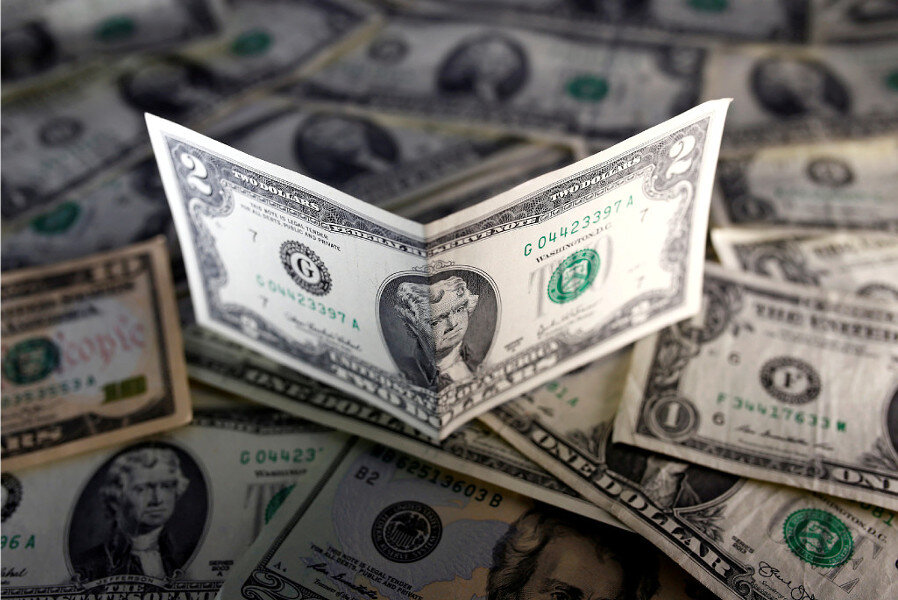US dollar reaches 13-year high: What that means for you
Loading...
| NEW YORK
Whether you call it a sawbuck, a greenback, a bean, or a smacker, the US dollar climbed to its highest level in 13 years on Friday, as investors doubled down on their expectations of faster inflation and higher interest rates under a Trump administration.
"People are still trying to wrap their arms around what the US elections mean for policy going forward," said Jason Pride, director of investment strategy at Glenmede in Philadelphia.
The election outcome briefly spooked financial markets worldwide, but they quickly reversed course as traders seized on President-elect Donald Trump's campaign promises of tax cuts, deregulation, and infrastructure spending as positives for the greenback.
"It has caused a wave of dollar buying across the board," said Richard Scalone, co-head of foreign exchange at TJM Brokerage in Chicago.
To be sure, it is unclear how many if any of these proposals would materialize. Mr. Trump's stance on immigration and trade, if they become law, could hurt the dollar, analysts said.
What does this mean for American consumers?
Many nations measure their currency against the US dollar, so their relative values are constantly floating up and down. When the US dollar is "strong," it means that American currency buys more of another country's goods or services.
This might be good news heading into the holiday shopping season, since anything made in another country – like electronics or toys – will be cheaper. It also means tourist dollars will go further for Americans traveling internationally, so this could be a good time to take that vacation.
But there is a downside. Any US company trying to sell goods to foreign customers will suffer, because their dollars (or yen, or yuan, or euros) won't go as far when buying US-made goods. That puts US producers at a disadvantage in the global market. Over the long term, this can encourage manufacturers to relocate plants to foreign countries with lower costs. In other words, a strong dollar can mean jobs lost in the US.
On Friday, the dollar index – the comparison between the US dollar and a "basket" of foreign currencies – hit a high of 101.48, its highest level since April 2003. It has risen over 4 percent in the last two weeks, its biggest fortnightly rise since March 2015.
Material from Reuters was used in this report.









